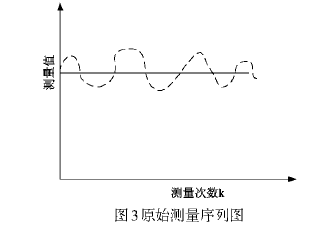An error that is constant or varies according to a certain law is called systematic error or deterministic error.
,
Its appearance is generally regular,
The effect can be eliminated in the measurement results. however,
Existing system errors are not found in time,
Then for metrological verification orInstrument calibration
Is dangerous
,
Can not be discovered and excluded through data processing like accidental errors,
And some systematic errors are not easy to find,
This kind of error is more harmful to the metrological verification. Moreover, the uncertainty of the measurement is characterized by systematic errors. Based on measured data,
Evaluate the pros and cons of the things being tested,
The accuracy of the measurement directly affects the quality of a product and the economic benefits of the enterprise. In today’s economic globalization,
Measurement accuracy even affects the country's import and export economic benefits. In recent years,
Many econometricians in various countries have done a lot of research on the scientific and accuracy of measurement methods.With the development of science and technology and the maturity of various statistical theories
,
While measuring hardware and software is rapidly evolving,
Higher requirements are placed on the accuracy of instrumentation. This shows that,
Finding and eliminating systematic errors is an important task.Among them, electrical measurement has high sensitivity, high accuracy, and is widely used in various measurement techniques and control features.
,
But there are many factors affecting electrical measurements.,
And it is not easy to be noticed. In electricityInstrument measurement
In the experiment
,
The result of the measurement is not the true value of the product being tested,
The earliest concept of quoting "error" caused a lot of controversy. until1927
year,
German physicist Heisenberg proposed the uncertainty relationship based on quantum mechanics theory. Subsequently,
The theory of uncertainty assessment is widely cited in the measurement of electricity.1
Systematic error analysis
Systematic errors and sources in electrical measurements and metrological verification can be divided into human factors, method factors, instrument errors, measuring device factors, component factors, circuit characteristics factors and environmental factors.
,
Different factors will produce different errors. Now described as follows:
Human Factors
:
Personnel error, reading error, operational error, temperature, humidity, etc.;
Method factor
:
Violation of verification procedures, use of non-standard methods;
Instrument error
:
Standard gage error, display characteristic factor, indicator instrument factor in unbalanced measurement, interval sampling factor, etc.;
Measuring device factor
:
Experimental equipment factors, sensitivity factors;
Component factor
:
Stability, linearity and nonlinearity;
Circuit factor
:
Right angle error, modulo and phase angle in AC circuit;
envirnmental factor
:
Magnetic field, electric field, current thermal effect, circuit stability, etc.2
Research on the method of uncertainty evaluation
At present, the commonly used uncertainty assessment methods in China are mainly divided into two types.
:
The traditional method of static uncertainty evaluation based on statistical theory and the dynamic measurement uncertainty evaluation method based on new model and new theory. Uncertainty assessment process1
Shown.
(1)
Static uncertainty assessment
Liu Zhimin et al. proposed using the maximum variance method to assess the standard uncertainty of measurement results.
;
Song Mingshun et al. gave an uncertainty evaluation formula for measuring the extension of a least squares measurement result.,
This measurement follows a normal distribution and is independent of each other.,
And verified in practical applications,
Make upGUM
The shortcomings in the formulation of the problem. We verified the measurement uncertainty evaluation model.,
Use the Edgeworth series expansion form to represent the distribution function of the measured data.,
Then a large number of analog values ​​of the measured data corresponding to this distribution function are generated by Monte Carlo simulation.,
The standard deviation of the calculated analog value is used as the verification value of the uncertainty evaluation,
This enables verification of various uncertainty assessment models. And an example is used to analyze the different measuring instruments and methods used by this party.2
Resistance in the measurement,
Measurement equations and data are shown in the table.1
.
(2)
Dynamic uncertainty assessment
The theory of dynamic measurement uncertainty is the essence of modern error theory
,
It also represents the research direction and progress of contemporary error theory. In theory, bid farewell to the traditional method based on statistical theory,
It makes up for the shortcomings of traditional assessment methods based on statistical theory. Due to late start,
Dynamic uncertainty assessment cannot be applied to the uncertainty problem in all statistical theories,
If you combine dynamic static uncertainty,
The effect will be better.Based on Wang Zhongyu’s proposal based on grey system theory
,
To illustrate the dynamic uncertainty assessment method. Grey evaluation model of standard uncertainty,
During the measurement process,
Due to the existence of measurement errors,
Make the measurement results uncertain to a certain extent,
Therefore the measurement system can be seen as a gray system. If there is a set of measurement data sequencesx=[(sk)lk=1,2,
..., n],
Number of measurementsk
Absc.,
The original measurement sequence diagram with the measured value as the ordinate is shown in the figure.3
Shown.
3
,in conclusion
Standard study of uncertainty assessment
,
It is very important to know the application of measurement uncertainty evaluation in electrical measurement.,
The accuracy and scientific factors of the evaluation algorithm directly affect the quality of the electrical measurement. Comparison of static uncertainty assessment and dynamic uncertainty assessment,
The development direction of future measurement uncertainty is combined with dynamic uncertainty assessment and static measurement uncertainty assessment.,
It makes the measurement uncertainty in electrical measurement more accurate and scientific.Household Electrical Appliances
gree , https://www.greegroups.com